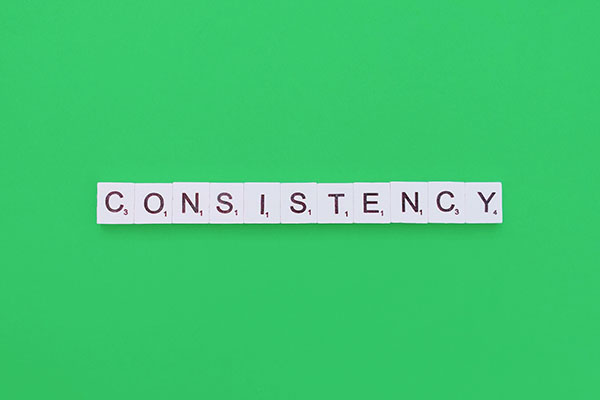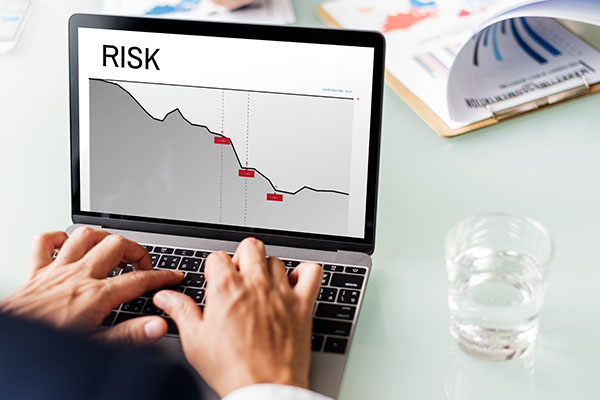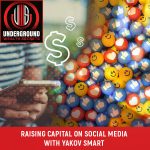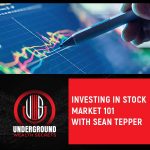Market Demand With Roger Khoury
- Post author By rldiamond
- Post date August 11, 2022
- No Comments on Market Demand With Roger Khoury

Are you looking to gain more control in your life and attain financial freedom? Listen to your host Julie Houston as she talks with Roger Khoury about analyzing market demand to make great forecasts and secure your future. Roger, the CEO of Market Forecasting Academy, knows how to keep good returns in businesses. In this episode, he shares success strategies that can take your business to the place you’ve been dreaming of. As an entrepreneur, you need security, control, and a glimpse of the future to help you make better decisions. So, tune in to know more about financial markets and enjoy the life that you have built for yourself.
—
Watch the episode here
Listen to the podcast here
Market Demand With Roger Khoury
I’m super excited. We have the Founder and CEO, Roger Khoury with Market Forecasting Academy. You explained it so well. How would you explain our meeting? We met randomly in a parking lot one night.
It was interesting because there was an event but the event has limited parking. We met at an offsite parking lot and bumped into each other. You are like, “The next shuttle that’s going to come to pick us up is going to be a while. You had a way to get up there.” We all jumped in your car. We all went up and got to know each other. We talked and it was great. It turns out you met Jonathan who invited me to go with him for this event, who is a partner of mine. You guys knew each other years ago. You also reconnected. It was interesting. Sometimes providential moments lead to fantastic things.
The universe had us in the location we were supposed to be at the right time. We got to talking and you are doing some incredible things. I would love to pull back the curtain for all of our readers so they would know what’s working in your world.
I’m involved in the financial markets. Pretty much anyone who’s got some capital tends to dabble in the markets on some level. At the very least, you’ve got people who’ve got long-term money or retirement money. People who’ve got a fair amount of money like to build, invest and do something. A lot of professionals like to invest and find ways that can help them work out of the grind that maybe they are successful. They work 50, 60, 70 or 80 hours a week but they want to be able to enjoy life and have a lot more time freedom or a little more security and more control over the outcomes of the future or retirement, whatever the case may be. On some level, most people are involved in the financial markets.
One of the problems that people struggle with in the financial markets is uncertainty. There was a great deal of uncertainty when they hear of something that they think you should be invested in or maybe they have learned how to trade and they want to trade so they try to get the best course of education, tools, systems or technology that’ll give them an edge. It’s all of those things when they apply them.
The biggest problem is they never know before they are committed. Whether what they are interested in that looks good as an opportunity to invest in or trade is going to work out or not until they are in and waiting to see what’s going to happen, which then starts to mess with their emotions. Even when they are in, they don’t know where it’s going to go and what’s going to happen next. They are getting into second-guessing themselves. They start to doubt and argue about what they think maybe they should do or shouldn’t do. It’s hard to stick to the rules when you don’t know what you are dealing with.
Some people are very disciplined and they will stick to the rules no matter what. Even then, they find that whatever they start with may work for a little bit and then over time, it starts to work inconsistently, poorly or not at all and they are baffled. They are off seeking the next new thing or what’s working.
Markets are always changing and evolving. People just generally have an inconsistent experience and they don’t have real confidence. Click To TweetPeople realize the markets are always changing and evolving. With that, what ends up happening is people have an inconsistent experience. They don’t have any real confidence. They end up taking large risks or holding onto a large downturn, typically called a drawdown because they don’t want to take that stop. They are hoping to recover. That’s great when the market is in a bull run but what happens when the market shifts, turns and doesn’t come back and recover like the Nikkei? Japanese index took a dive off its highs and never came back and recovered.
We are a little bit spoiled here in America and our indexes because we keep seeing higher highs but that may not always be the case. One of the biggest problems is the market always goes up but we have examples where it doesn’t in Japan. We also know that timing may not work out where when I want access to my money or pull my capital out. When I want it or need it, it may be down 20%, 30%, 40% or 50%. We are speculating on the outcomes.
The reason for that, it turns out is everyone is focused on price and the price of things. Most people are focused on fundamental analysis and many of its different subsets and/or technical analysis and its many variations and all of the subsets. There are different technical indicators and technical analyses. Those are forms of technical analysis and people may be familiar with Elliott Wave, Gann, Fibonacci and things like that or simple indicators you can get on our price chart.
Those things may be to some people don’t matter. That’s always ideal for a beginner because they don’t have any bad habits or bad baggage. We can take them and they can run to the gate, they apply what they are supposed to do and get the results. You will have experiences tend to have to work through bad habits initially. It may take an extra month or so to get work through that.
Whether you are a beginner, a professional or have some experience or anything in between, the idea is most people are focused on those two primary forms of analysis. What I realized was there are six other forms of analysis. Some people may utilize 1 of the 6 which is order flow, trade flow or volume flow which is 1 factor but that still leaves them blindsided by 5 other factors. What are these other factors all about? They are all factors of demand in the market. They are the things that affect demand and demand affects the price.
People don’t often think about this. They inherently know it but it’s not a primary focus. People often get shocked when I tell them, “When you are focusing on price, price analysis, price action and indications that are derived from price, that price itself is a lagging indicator.” They are like, “To what?” “What causes all price movement to rise and fall? Demand.” If you have more demand for something, a price increase. When demand decreases or shrinks, the price goes down.
What causes the price to cycle up and down is the constant inputs of the demand and all of its variations and forms throughout the world. In the financial markets, in particular, there are hundreds of thousands of buyers and sellers buying and selling every day. That causes the price to cycle up and down every day. You could see price cycling on a 1-minute, 15-minute, 1-hour, 4-hour, daily, weekly or monthly chart. It doesn’t matter. As long as you are looking at a price chart, you are going to see price cycling. It’s that the longer period charts you are going to cycle in bigger and longer waves whereas the smaller ones are going to do it in shorter ways.

I can show you two different charts and it looks similar until you look at the bottom. When you see the timeline, you realize 1 is 12 hours and 1 is 12 months and it looks very similar. That’s a big clue. That means I don’t have to wait 12 months to earn 8%, 10% or 12%. It’s very possible if I understand what I’m looking at to earn that in a 12-hour, 1-week or 1-month period depending on the level of activity I’m willing to engage in based on this next piece of information. Demand is the only reliable leading indicator of price.
If I can successfully and accurately, I’m talking with at least an 80% to 90% level of accuracy with consistency, be able to know where the real-time demand is in the market, in any market and timeframe, I automatically know what I can expect the price to do. Why? It’s because the price is always chasing after demand.
They always have this weird relationship where demand moves and price tries to chase after it. Sometimes it overshoots. It’s got to come right back. If I can visually see where the demand is, I can also forecast where the price is going to go and how that work. If you can think about your car, there are a lot of complicated actions that are happening underneath the hood. All you need to know and see are primarily two visual indications that tell you everything you need to know, your fuel gauge and temperature gauge. If your car is overheating and running hot, where it should be and how much fuel you have.
If you have a road trip that’s 250 miles long, if you look at your fuel gauge, it says a quarter tank of gas. There’s no stress. You don’t have to sit there with uncertainty wondering when you are going to, all of a sudden, run out of gas and your car is going to stop. You know that a quarter tank of gas is not going to get you 250 miles down the road. You are going to have to stop and refuel. That’s not subject to your interpretation. That’s an objective data point that keeps you calm, cool and happy.
That’s important to not be stressed living with uncertainty. I need objective data that I can’t mess up. What if you had a full tank of gas but your car is overheating? That’s an environmental condition that says, “If I don’t pull over and take care of this, I’m going to probably get stuck somewhere on the road.” That’s a piece of information.
What I ended up developing quite providentially through a series of serendipitous events and epiphanies that I had, I figured out how to create an analysis process that identifies values and measures where the real-time demand is in the market and it’s a visual indication. It takes all of these outputs and demand factors to combine them into a very simple visual indicator of the bottom below the price that shows me the fuel very much like I’m against the price.
People like to look at Tesla. Tesla was up $1,000. I like to use a rubber band to give them a visual. Let’s say this hand over here, I’m going to make it turn into a fist as demand. This one here with my open palm is price. Price is always trying to catch up to demand. When the price went up to $1,000, demand shifted back and you could see on the bottom that demand rising up and down. When it was the last time up at $1,000, demand was down here somewhere and so the price came back. When the price went up back to retest that same $1,000 level, demand was right back where it was the last time when the price was at $700.
If you can visually see where the demand is, you can also forecast where price is going to go. Click To TweetThink about that. If I’m seeing the price at $1,000 and a visual indication that demand is hovering back at the same level when the price was at $700, that tells me immediately that I don’t have to sit, wait, guess and hope since the price always falls. Demand moves first and price moves second. Price lags behind demand. That gives me time in a very timely manner, not like, “This is going to crash at some point.” No. We know that within 1, 2 or 3 days, something within a timely period, we can expect the price to move down from $1,000 back down to around $700. That’s a 20% to 30% downturn. I don’t have to be surprised by that. The same thing happens on a minute chart.
If someone likes to trade intraday, they want to spend a couple of hours in the morning or the evening. They want to follow the price cycles and try to trade 10 hours over the week, 2 hours a day. They are going to see these smaller timeframes and they will be able to see this discrepancy because what happens is demand moves and price goes after.
The analysis not only tells you where demand is. You also understand where the conditions of the market are. If it’s stormy, let’s say because you and I can forecast a storm, it doesn’t mean you and I should be running our errands in the middle of the storm. What do we do? We say, “It’s too stormy. If I go out, I’m going to be feeling stressed and under pressure. That might be a higher chance for an accident or someone else could run into me.”
Let’s wait. We don’t want to be out at higher moments of risk. Even though we have a pretty good chance of getting safely going and coming back but we are taking a risk. We are speculating. Anytime we are under pressure, we are likely to make a mistake or experience something that’s going to give us a sour experience.
There’s a wisdom to this. As the market’s forecastable, it doesn’t make it tradable. That’s why we need the other aspect of analysis which is not where demand is but what conditions are they in. What I developed was something called Demand Imbalance Arbitrage because I’m focused on the demand of things, not the price of things. That eliminates the uncertainty, the guesswork and the need to take big risks, which is important. People who have any experience usually are stuck holding onto large drawdowns and downturns in the market, waiting for it to hopefully recover. That goes away. Whipsaws of people who are experienced will have in the market. That goes away.
What’s interesting is that if I have a way to limit and reduce my risk without limiting or reducing my upside profit potential, that flips the risk-reward paradigm on its head because people have trained to think that if I want more return on my money, I have to be willing to assume higher risk. If I don’t want much risk, I want safe investments and reduce my risk, then I have to be willing to accept lower returns on my money.
This gets eliminated and flipped on its head because I can reduce and limit my risk without reducing or limiting my upside. I can make market-beating returns and beat inflation with consistency because if you don’t have consistency, you’ve got nothing and with confidence because if you are not confident, you are going to be making mistakes. You can’t be driven by fear and you can’t be taking big risks or speculating on the outcome.

You don’t want to gamble on the outcome. You want to be 8 or 9 times out of 10. Look what happens. Demand Imbalance Arbitrage is arbitraging or taking advantage of the difference when we have a significant imbalance between where prices and the actual demand. We have the visual indicator that takes all these complicated things and makes it visually simple and easy to read like a fuel gauge. In a minute, you can look at everything and go, “Price is not sustainable there.”
What happens is this. Without this analysis process, which acts like a risk filter so you can apply any strategy or approach you want to the market, you can look at this analysis that will tell you, “You’ve got about a 50% or 60% chance of this working out.” That’s too close to a gamble. I want an 80% or 90% chance. I noticed. I say no. Even though it looks good on the surface, I have avoided a stressful experience in the market because if I’m stressed making money, I’m not likely to have a sustainable performance outcome. That’s going to degrade my experience over time because I’m stressed and pressured.
You want to remove the pressure. Watch what happens. Most people will look at this good opportunity where the price is stretched out. They will say, “There’s a good reason for it to snap back to go a certain level in the market.” When you apply demand analysis, you go, “Wait a second. This thing is demand. Here’s the price.” That looks like a good opportunity but there’s also a lot more room to keep stretching out. That’s where there’s a lot more risk.
We do is we end up realizing about 80% to 90% of the opportunities that will look good in the market to everyone else and then are likely to be engaged. For us, we go, “That’s not good enough,” and we say no. We only take about 10% or 20% of the opportunities we see because we only want the opportunities to do one. There are so stretched out that there are the odds of it stretching them further away from demand are extremely unlikely. That creates low risk and a high probability of opportunity to profit from the difference as price rushes back to catch up to demand. There’s a level of certainty there.
That gives people the four vital Cs, which is Clarity. That’s based on total objectivity, nothing subjective. Ten people can look at the same thing and all agree. That means this. You’ve got Control for the first time over two things. You have control over your performance outcomes and your experience so you are not stressed, pressured and wrestling to get your outcome. We have Consistency, which is what allows us to compound our account into something meaningful.
Consistency, when it’s allowed to be a sustainable process that’s reliably repeatable over a 2, 3, 4 or 5-year period depending on what someone starts with a very part-time effort, say 10 to 15 hours a week, morning, midday, night or whatever works for their schedule, can reliably grow an account where they can slowly work towards replicating their full-time income through that part-time effort. That’s the first step to gaining time freedom.
The next step is not to sit there, content with being a trader or trading for a living. That’s not a healthy thing. You want to be a full-time investor. Allow the compounding to continue and start to use the added compounding amount in your account to then be put into passive income yielding investments, which is what you do and help teach people to do with real estate, which is amazing. That creates a passive income that does what so that can replace your need to be trading.
Consistency and confidence are very important. If you don't have consistency, you've got nothing. If you're not confident, you're going to make mistakes. Click To TweetYou are always coming to the market with a want, not a need. There’s no pressure to perform. You can focus on the process that delivers that consistency, which then gives you the fourth C, which is Confidence. It is built on consistency, clarity and control. People want confidence. It’s critical to have confidence in what you are doing.
How did this come about? How did you even create this? This is mind-blowing. Where did it come from?
It was a moment where I had a fit of rage. I’d snapped. I thought I’d have something and yet it disappointed me. Since 1996, I was at this and after many years looking back, I’d spent over $300,000 over that period. I’m on the best education to get my hands on tools, systems, strategies, indicators and technology. No matter what I did, I always came up with this situation where I make money, it would be working and then it would stop working or work inconsistently. I go, “Why?” It’s because the market’s changed and it’s no longer favoring whatever approach I came at the market with.
It’s because I was always focused on fundamental analysis, technical analysis or variation of that, volume order flow or things like that, which are provided a hit or miss experience because you have price. If price is a lagging indicator and you are using technical indicators, we have a lagging indicator on top of another lagging indicator. No wonder I was behind it being blindsided by force. You don’t even realize that you have to take into account those 5 or 6 other things that you have to be thinking about, which is people don’t realize they have to take into account geopolitical forces.
You have to take into account volatility and market sentiment. Beyond volume order flow or trade flow, you are going to have something called prime liquidity pools, which is the area that is in the market where a broker or a market maker knows that they can manipulate to a point. They know the market can only go so far so they can throw their weight and get a better price entry and let the market go the rest of the way.
People who are over here might get stopped. They get a loss. They will see the market whip them out and then it goes. That’s a prime liquidity pool. That’s where the market can get manipulated. If we know how to identify that, which is part of my process, then I can take that into account. I can be beneath that. I don’t have to become a victim of it anymore. You’ve got the imbalances between supply and demand. Those are factors above and beyond technical, fundamental, volume order flow and all those things.
I figured out how to put all those together into that simple visual indicator that tells me here’s what the combined impact of demand is and its likely impact on price. When I start to put the different pieces together, I apply that in a multi-process. I have a process like when you buy a diamond, you never look at the one side of the diamond. You have to look at each side of the diamond. I have that process on each side of the market and it gives me a 360-degree view. I can make a very accurate 80% to 90% forecast I can be confident that works out.

What happened was after fourteen years, I realized I have got this problem and I almost punched my monitor. I was so mad and went to cool off. I calmed down to the beach. It’s a popular surfing point in Ventura County, Southern California called Silver Strand Beach. It’s not a very touristy spot but it’s a popular surfing point.
What happened was I went there, sat on the bench and watched these surfers. There were seventeen. Fifteen were held together. They kept taking wave after wave, crashing and burning but these other two off to the side were not taking very many waves. I thought those were amateurs trying to learn from the 15 that seemed to be regulars because these other 2 were not taking very many waves. About an hour and a half into it, I realized, “Every time those two would take a wave, it would be nice. They’d ride it almost to the shore and it was a nice ride.” They weren’t crashing and burning. I realized, “Those are the pros, not the amateurs.”
I started to see things from a whole different upside-down perspective because I realized those two guys had figured out a way to filter out the waves that were not likely to give them a good ride. I thought, “That’s a principle in life. What if I took that idea and put it into the market?” I couldn’t wait. I rushed back. I almost got a speeding ticket. I missed it but I got back home and that started me on a series of different discoveries. One of which was I had to stop focusing on the logic of looking for opportunities to make money in the market. Instead, I started looking for opportunities that were not likely to lose money instead. That changed everything.
That was the thing that was my epiphany and pivot point. I began to realize there were a bunch of environmental factors that I had to look at. That came because a week later, I was watching The Morning News. For some reason, I’d never noticed that there was a surf report. I lived in Southern California most of my life. I don’t know why. It never hit me because I’m not a surfer but with that experience in my head, it’s a surf report and I have brought up a surf report. I sat there listening. I watched the meteorologist explain some things and then the anchor man said that was much simpler than that. I’m not sure of the meteorologist.
The weatherman went into all this detail about any surfer who works this on is going to look at this because of all these things. He started explaining all the environmental factors and I thought, “If you think about it, the market has environmental factors.” That’s when I discovered the eight factors. It was after that news report that made me realize what factors are causing the price to move.
I had to figure out there was demand. Demand is what makes prices move. What are the forms of demand? What are the forces and factors? That’s when I started to put those major factors together and there are eight factors. Most people focus on only two. When I put it together, all of a sudden, I found something interesting. I realized the market can’t significantly move. It can’t correct and crash unless the environment builds up to make it conducive for such an action.
That’s a game changer because before this analysis was figured out, everyone teaches you can’t time the market or say, “The market is over-inflated. We are due for a crash but no one can time that.” All of a sudden, when I apply this analysis, it was visual. I could see when the price makes a new high or demand is down. I can forecast. It’s going to pull back, maybe then hold on and then continue higher.
Avoid stressful experiences in the market. If you’re stressed making money, you’re not likely to have a sustainable performance outcome. That's going to degrade your experience over time. Click To TweetWhen I can see that there are times when the market makes us new high and then demand does this, it’s dramatically moved lower than where the price is. You know that in a very short period you are going to have a significant correction or crash as it snaps back down and catch it to where the demand as it shifted like Tesla.
It was up at $1,000. Demand was at $700. Within 2 to 3 days or whatever it was, it crashed down to $700. It’s a 30% decrease. That was big. I can’t walk into a clear blue sky and have it start raining over our heads. We are going to see clouds rolling in. We are going to see the temperature change. It going to get darker. Pressure is going to change. All this stuff changes. Those are all visually identifiable but here’s the best part. All of those factors take time to build and that’s what makes them forecastable.
Hurricanes and tornados don’t land on you. You have to have factors to say those are hurricane or tornado warning or a thunderstorm warning. We can prepare. The market is the same thing but we don’t have to have these big crashes. It’s the same thing with demand. Demand can get overstretched in a smaller timeframe, which feels like a pretty significant move in the small timeframe. On the bigger charts like a long time for a daily, it might be a little bounce around on one little price move.
In a one-minute time, it could look like it’s this big thing. That’s where you can make a quick 2% over 30 minutes or 1-hour periods using this analysis. Think of the power of being able to compound that with consistency. That’s how I came up with the methodology. That was the turning point. It built into this and I started realizing I can have a very confident and certain experience that’s consistent. I can reliably repeat it. Since 2010 when I developed this, I have never once had to fix it, modify it, tweak it or update it ever. It’s the same thing. That’s not usual.
I feel so humbled because it’s miraculous. In all these crazy different markets that we have been in that we have seen the last several years, it’s unwavering. It’s robust and works on any timeframe in any market, whether it’s equities, stocks, commodities, futures, cryptos or currencies. People like to trade options where you have to know what the underlying assets doing. You want to analyze that correctly. You have a successful options trade. Anything. You are not limited because it’s an analysis process. That’s what’s been behind when people look me up to go, “I can’t find any negative reviews or complaints. How is this possible for years?”
The one thing that you don’t have to try and hope will work out. It’s as sure as I want to become a pilot. I go to pilot school. I have learned the process of how to take off, land and navigate through whether with an airplane to know what I’m supposed to stay ground or not flying for this particular weather. I can create a long successful and very stable career being an airplane pilot. You do it and get the results. There’s nothing to hope for or try. It’s there.
For me, I can guarantee a person’s success as long as they will do what I asked them to do and not get stubborn. They want to scratch each of their curiosity and put their spin on it because what’s proven is what I have done. What my clients have replicated over the years and have proven is, “If you follow the process.”

I understand that you are very close with all of your clients too.
I’m extremely close. I do the personal evaluations. It’s my life’s work. I will tell you something interesting. I never intended to teach this. I had no ambition to have a business or anything.
What did you do prior?
What funded all those years of failure and consistency was I was a business consultant and I worked for myself. I did pretty well there. It was a crisis moment where I had a brother and a partner. He embezzled money and blew everything up. My brother wants to sit down and says, “Why don’t you spend full-time for once and figure out how to be consistent with trading? That’s the only thing you have total control over. You don’t have to depend on anybody or anything else. You are not dependent on the economy that way because you can make money up, down or sideways. You don’t depend on anyone else agreeing with you, doing business with you or negotiating with you.”
I said, “That makes total sense.” That was what prompted me to go in. I spent 1.5 years of 16 to 20 hours a day, 6 to 7 days a week to figure this out. What happened was when I did it, I accomplished my goals and all of a sudden, had all this free time on my hands. I wasn’t consistently needing to grind and keep at it every week. People were starting to ask.
At first, it was people from church who asked, “What do you do? How are you always free and socializing all the time? Would you be willing to teach me?” I’m like, “Yes. It’s not a competitive thing. It’s good.” I would teach them. I used to teach Sunday school when I was younger. I’m a teacher at heart. I realized and I also know how rewarding and fulfilling it is personally to contribute to and touch a person’s life. Especially, when you can transform something positive, it’s amazing. As I did that, more and more people began to come. Ninety percent of my clients are word-of-mouth referrals from existing clients, which says a lot too.
I will make this available to your readers as well. If they want to know more, I have a mini-course primer on Demand Imbalance Arbitrage. People get to learn about it through all the courses. They get all the details. If they like what they see and they meet my requirements, they can apply and get to book some time to go through an evaluation with me directly.
Don't focus on the money and how much you can make. Instead, focus on things that are not likely to lose money. Click To TweetI make sure it’s a good fit because I have got people saying, “I will pay you whatever you want but I got to have this.” I go, “No. That fact that you are desperate, we’ll put you in the state of mind of no different than someone who’s 16 years old, got their driver’s license and dad bought him a $2.5 million Lamborghini. It’s not just a combination. It’s not wise. I can’t do that to your wife and kids. I’m going to set you up for self-sabotage. I can’t take you. You shouldn’t be trading. You should be doing real estate or something else.”
I want to make sure it’s a good fit and it’s responsible. For those who come in, I am engaged. I know every single one of my clients, their lives and their families. I have one with his wife visiting us for a week. They are not here to work. They are here to enjoy personal time together. We hang out and relax. We show them around Austin. My wife and I moved to Austin a couple of years ago from Southern California.
It’s such a blessing. I feel connected. Most of our clients become very close friends and some become like family to us. Frequently, we’ll get a handful of times a year. We’ll have a client who will come to spend a weekend or a week with us at our home. We have got a couple of extra bedrooms. It takes us a long but we love it. It’s a lot of fun.
For our readers, if you want more information, you can go to UndergroundWealthSecrets.net/Demand and get that free download that Roger was talking about. Roger, if you could give any new person your top 1 or 2 tips that may be interested in dabbling in this, what would you say?
Two critical keys. First, we often are led to believe that we need to focus on our goals. How much do I want to make? What do I want to earn? Where do I want to live? What do I want to do? Here’s the thing. That can distract you away from the very thing that’s going to bring you there. We ended up spinning our wheels and starting, stopping and trying this and that, the next new thing, what’s working?
Tap into a robust principle-based process. Why do I say principle-based? It’s because principles are unchanging like gravity. It’s always going to be there. You got to deal with it. Are you dealing with the consequences of not respecting it? I can rely on those. It’s repeatable and reliable. The principle-based process is what delivers the results.
When I focus on a process that makes a cabinet, it’s impossible for me not to come out with a cabinet at the end of that process. That process is proven to produce cabinets. When I want something in the markets, I don’t want to say, “I want to make X per day, per week or month.” I want to be a good steward of applying the process as properly as I can because the process will not only produce the desired results. What I have seen over the last years is it’s way more than exceeds what they hope to get out of it because they are focusing on what delivers the results. That’s number one.

Number two, besides focusing on a process, the most critical aspect for me is don’t focus on the money and how much I can make. Focus on things that are not likely to lose money. I don’t want to be caught up in the shiny object syndrome. I don’t want it like, “It looks good.” Does the environment look like it’s worth your stress? Is it high probability?”
You and I know how to drive a car. What happens when you and I who are experienced drivers are under pressure because we are running late for an important appointment? Suddenly, we’ll drive that car differently. We become aggressive and rationalize behaviors. We know we ought not to do and our chances to get a ticket, get in an accident and a life-altering event increase.
There’s a wisdom to this. If we can say, “Let’s focus on a process. Let’s not focus on the money I can make. I want to focus on not losing money. With the money I make, I get to keep. Making money in the markets is not the hard part. It’s keeping what you’ve got.” Those are two things that I would say are principles in this and we help people do that.
Those are outstanding and I appreciate you giving those two out. Thank you so much, Roger. It’s been such an honor to have you on. For more information on Roger’s download, you can go to UndergroundWealthSecrets.net/Demand.
Thank you for having me. It was fun being here. I appreciate it.
Important Links
- Tags analysis process, high probability, Inflation, money, price, supply







